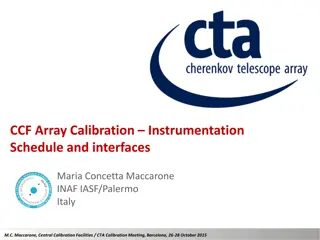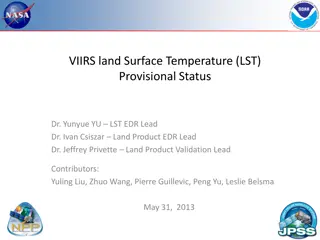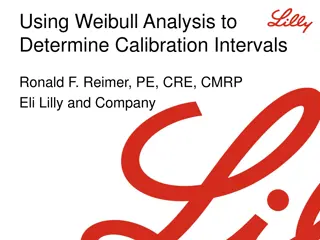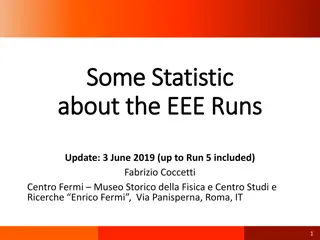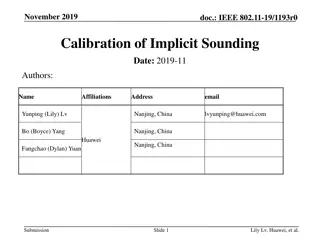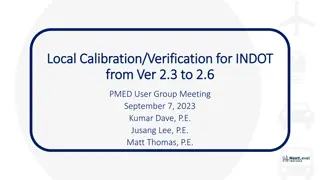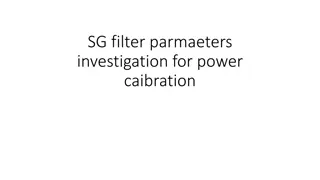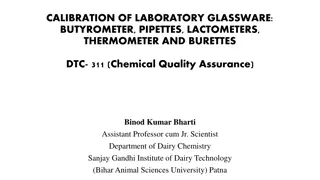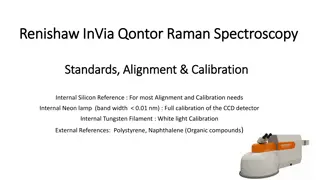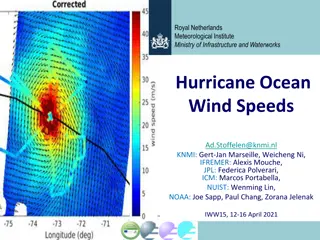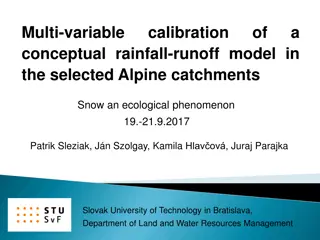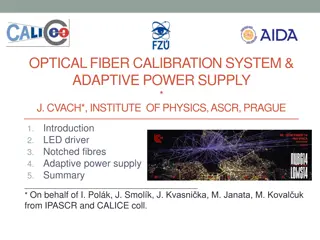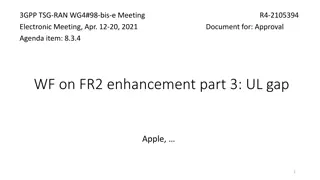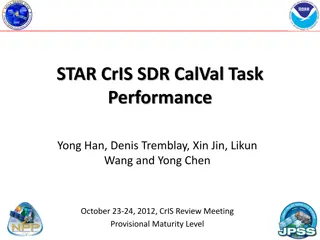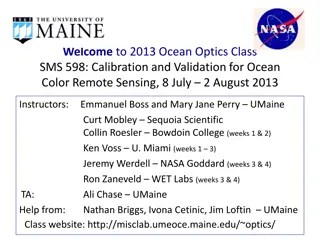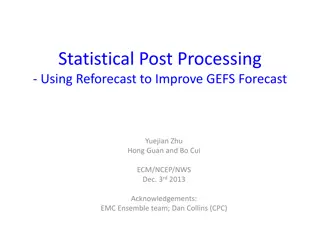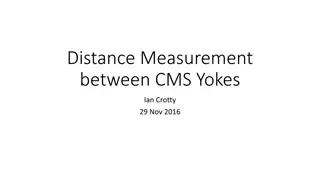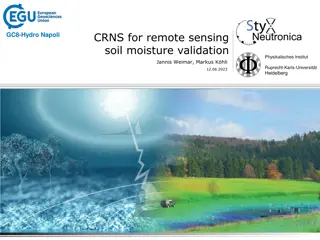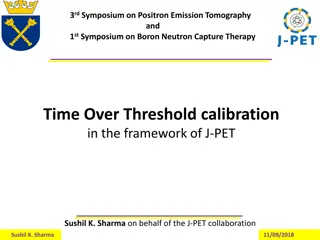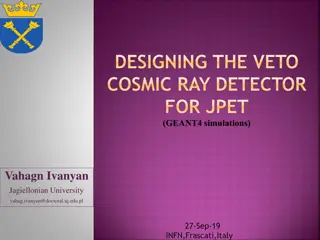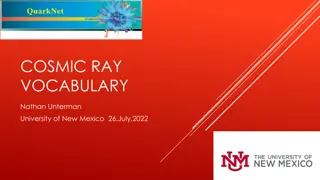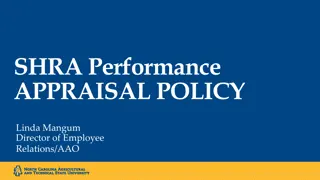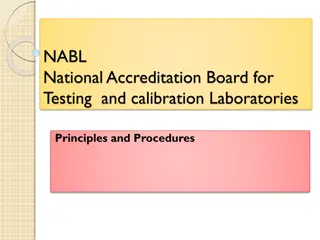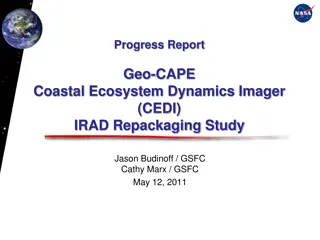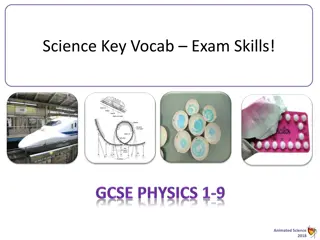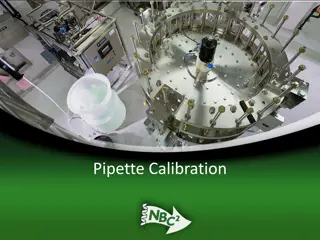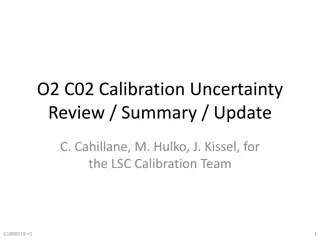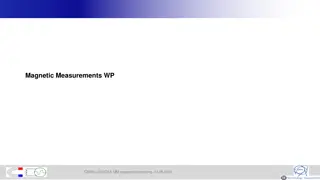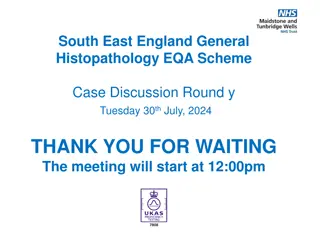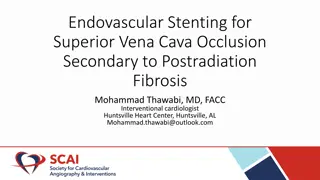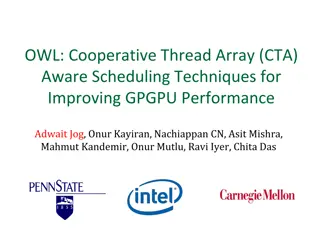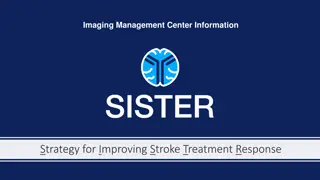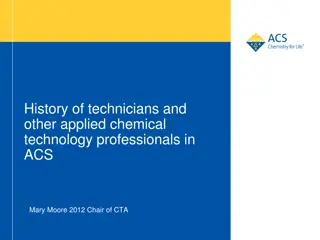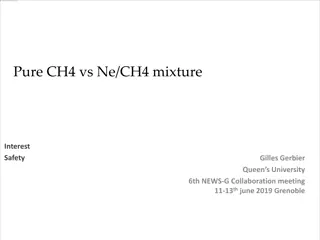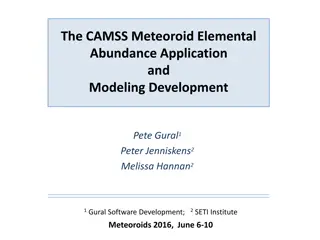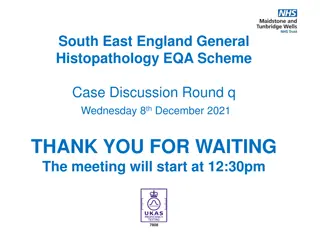Analysis of Muons for ASTRI at CCF/CTA Calibration Meeting
The analysis carried out at the CCF/CTA Calibration Meeting focused on muon detection for ASTRI using simulations and analysis software. Steps included pixel cuts, center and radius determination, image cleaning, radial and intensity profile computation, and reconstruction error evaluation. Results showed reconstruction errors on the zenith angle and energy, providing insights into the performance of the muon detection system.
Uploaded on Sep 25, 2024 | 0 Views
Download Presentation

Please find below an Image/Link to download the presentation.
The content on the website is provided AS IS for your information and personal use only. It may not be sold, licensed, or shared on other websites without obtaining consent from the author. Download presentation by click this link. If you encounter any issues during the download, it is possible that the publisher has removed the file from their server.
E N D
Presentation Transcript
CCF/CTA Calibration Meeting Universidade de S o Paulo Instituto de Astronomia, Geofisica e Ciencias Atmosferica Muons for ASTRI Teresa Mineo, Cettina Maccarone INAF/IASF-Palermo, Italy for the ASTRI Collaboration & the CTA Consortium T. Mineo CCF/CTA Meeting, Barcelona, 26-28 October 2015 1
Simulations 2000000 ( +, -) CORSIKA N. Event Site Paranal Viewcone 4 deg Pointing Zenith spectral index 2.0 energy range 6 GeV-1 TeV Max Distance 2.1 m Starting altitude 500 m above M1 20x106ct/s/pixel Background ASTRI-SIMULATOR: includes the mirror reflectivity, the SiPM PDE, the PMMA window transmission, some mounting structure over the mirror ANALYSIS SOFTWARE Fortran + IDL code T. Mineo CCF/CTA Meeting, Barcelona, 26-28 October 2015 2
Steps of the analysis 1) For all events, cut pixels below 0.5xMaximum or 5xRMS of the background; cut isolated pixels 2) If more than 4 pixels are left, the centre and the radius are obtained with Taubin method, minimizing the displayed function. This step cut ~20% of the events 2 ( 2+ y-b ( x-a ) ) ) 2-R2 ) x-a ( x = (a,b) 2+ y-b ( 2 R 3) Clean the raw image with a constant value equal to the 1xRMS of the background 4) Compute the radial profile (ArcWidth) and fit it with a Gaussian T. Mineo CCF/CTA Meeting, Barcelona, 26-28 October 2015 3
Steps of the analysis 5) Compute the intensity profile along the ring; Fit it with the Vacanti function low statistics It makes the fitting faster it provides values of the impact parameter sufficiently adequate for the first iteration The second iteration will consider the correct functions, investigating in a range close to the value given by the fit with Vacanti. 6) Compute the reconstruction errors on the muon parameters after a selection on and on the ring radius ( <0.05 & R>0.8o). This cut 94% of the events T. Mineo CCF/CTA Meeting, Barcelona, 26-28 October 2015 4
Results: Reconstruction error on the zenith angle Err_zen=Sim_zen-Pix sqrt(a2+b2) Zen_sim = Simulated zenith angle a,b = coordinate of the ring center in pixel Pix = 0.17o pixel size Fitting with a Gaussian gives the maximum at 0.18o and the sigma 0.18o T. Mineo CCF/CTA Meeting, Barcelona, 26-28 October 2015 5
Results: Reconstruction error on the energy ( ) 0.105 GeV 1-(n cosJ)2 Err_ene=Ene_sim-Ene_rec Ene_rec= where Ene_sim Ene_sim = Simulated energy Ene_rec = Reconstructed energy n = 1.00019 refractive index = Cherenkov angle (ring radius) For 50% of the events the error on the energy is lower than ~22% E<20 GeV For 50% of the events the error on the energy is lower than ~12% and for 80% of the events is lower that ~20% T. Mineo CCF/CTA Meeting, Barcelona, 26-28 October 2015 6
Results: Reconstruction error on the impact distance Err_cor =Cor_sim-Cor_rec Cor_sim Cor_sim = Simulated impact distance Cor_rec = Reconstructed impact distance For 50% of the events the error on the impact distance is lower than ~20% T. Mineo CCF/CTA Meeting, Barcelona, 26-28 October 2015 7
Next Steps The aim of the following iteration is to reduce the reconstruction errors, compute the telescope efficiency and eventually increase the number of selected events (selection on ) This analysis will includes: an adequate cleaning of the image (see Cettina talk) fit the ring using as seed the parameters (radius, center coordinate) derived in this first iteration fit the distribution along the ring with a proper function that includes the shadow from the secondary mirror. T. Mineo CCF/CTA Meeting, Barcelona, 26-28 October 2015 8


